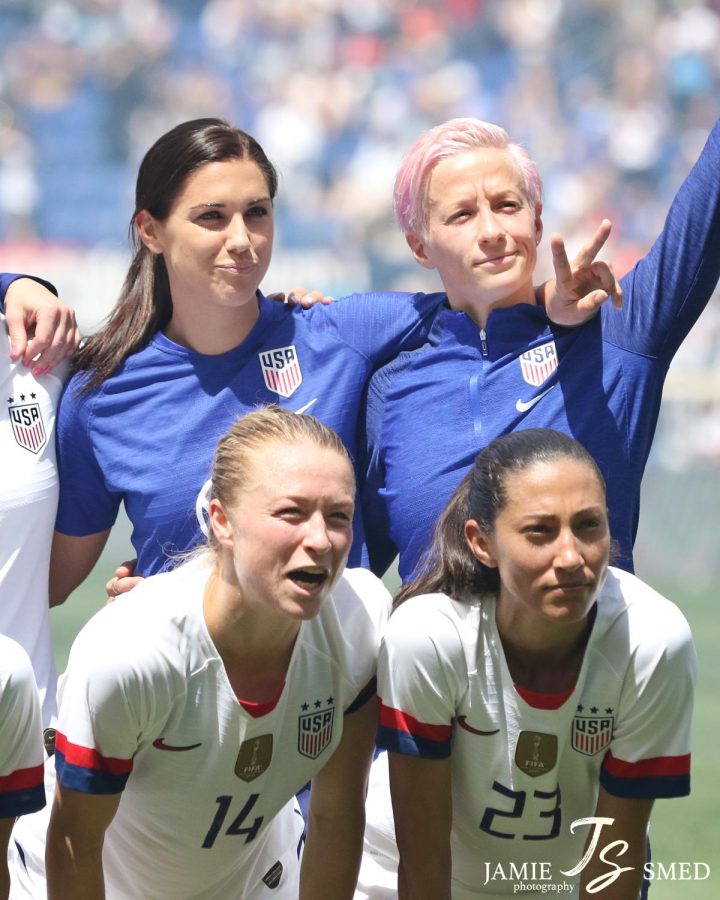The Fight For Equality in Sports
Players of the U.S. women’s national team have publicly been fighting for equal pay. This fight has been going on for six years with a World Cup win in the middle.
May 19, 2022
For years, athletes like Alex Morgan and Megan Rapino have been fighting for equal pay, eventually turning their fight into a lawsuit. The treatment of men and women in sports is notably different when it comes to pay. A lawsuit in 2019 accused U.S. Soccer of providing the men’s national team higher pay. The settlement that Alex Morgan and Megan Rapinoe participated in addressed these issues and granted current and former players a total of 22 million dollars. According to Sports Illustrated, U.S. Soccer has committed to providing an equal rate of pay for the women’s and men’s national teams in all tournaments, including the World Cup. After the long fight the US women’s national team has faced for equal pay, Alex Morgan calls this a “monumental step forward.” The amount of time it has taken for this to be addressed is obscured.
However, soccer is not the only sport facing these gaps and inequality as sports like lacrosse have differences in the way men and women play physically. For example, women’s lacrosse is only considered a semi-contact sport, while, helmets are required for men’s lacrosse as it is deemed a full-contact sport. This limits the way girls can play tremendously because they have to make sure they maintain limited contact. This also applies in high school as seen with sophomore lacrosse player, Agnes Rodts, who says, “I think that there is definitely a difference in the way men’s lacrosse runs compared to women. Historically at Millbrook, the women’s team has had more success during the competitive season. But that fact is often overlooked when the words men’s and women’s come into play.” She also notes that the women’s team gets promoted less than the men’s.
Basketball fans notice a significant difference in the cost of women’s and men’s tickets for games during March Madness. On SeatGeek, the most expensive ticket for a women’s March Madness game is $388 with fans paying an average of $93 per seat, while the most expensive ticket for men’s is $3,330 with an average of $803 per seat. This is the same case for most other sports because men often bring in more viewership than women. However, even though not as many people watch, they still deserve everything men do because they work just as hard. Agnes says, “If you go to the women’s games you’ll get your money’s worth whether or not they lose, the game will always get you excited and capture your attention.”
Women in all sports have been fighting and will continue to fight for equal pay and treatment. One reason that women are treated unfairly is due to the stereotype that men are more athletically gifted. Similar to lacrosse, football is played by both men and women but the men get to wear more protective gear and padding and women’s uniforms are more revealing with little to no padding. This causes issues because the sport is just as dangerous to women as it is to men, but women have less protective gear. When asked about the difference in men’s and women’s treatment in sports, freshman Ben Fulk says, “I definitely notice a difference in pay but I also think they should each get paid based on how much income their game/performance brings in.” Gender equality in the sports world has been an ongoing issue and athletes and coaches are taking steps toward progress to change it every day.












